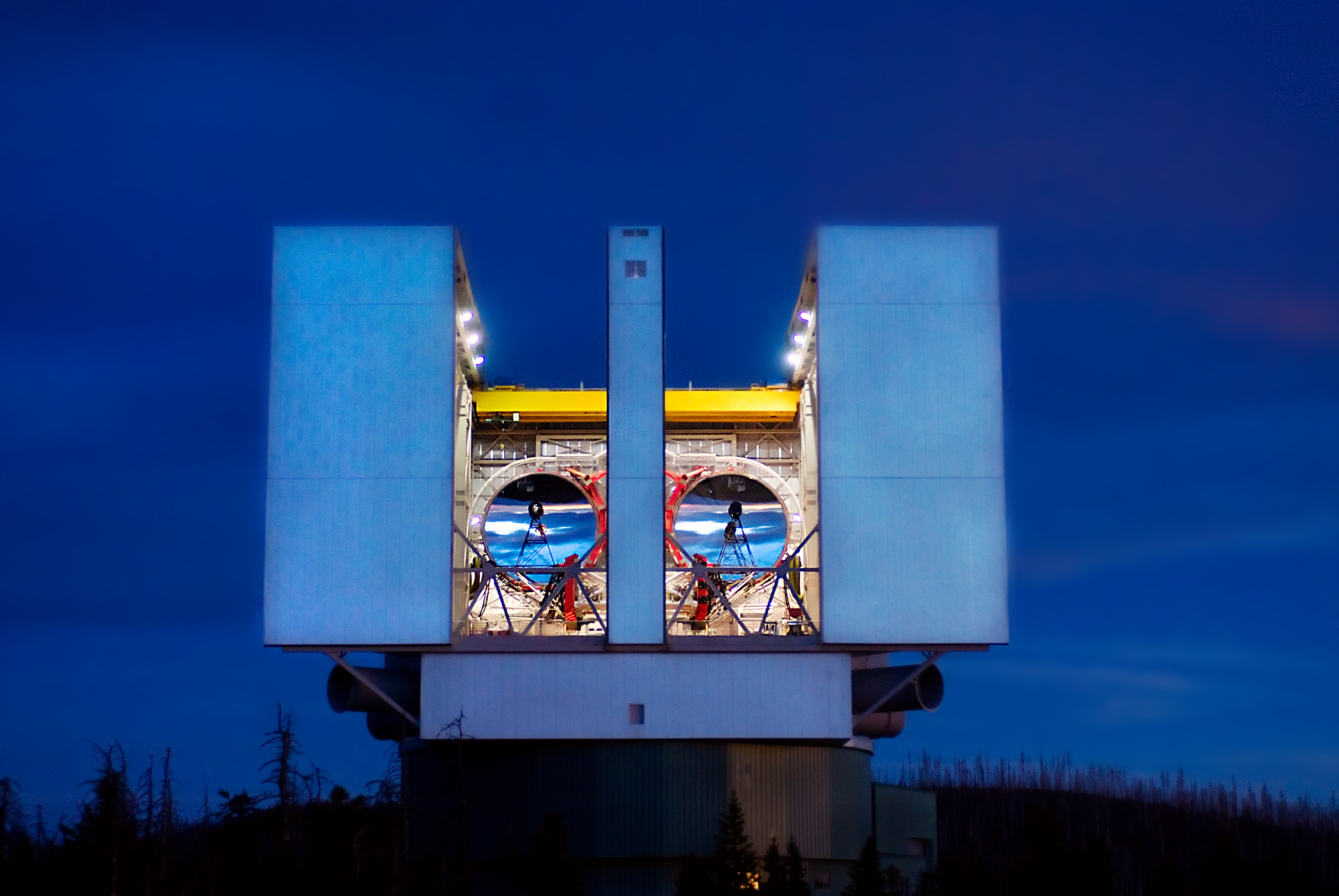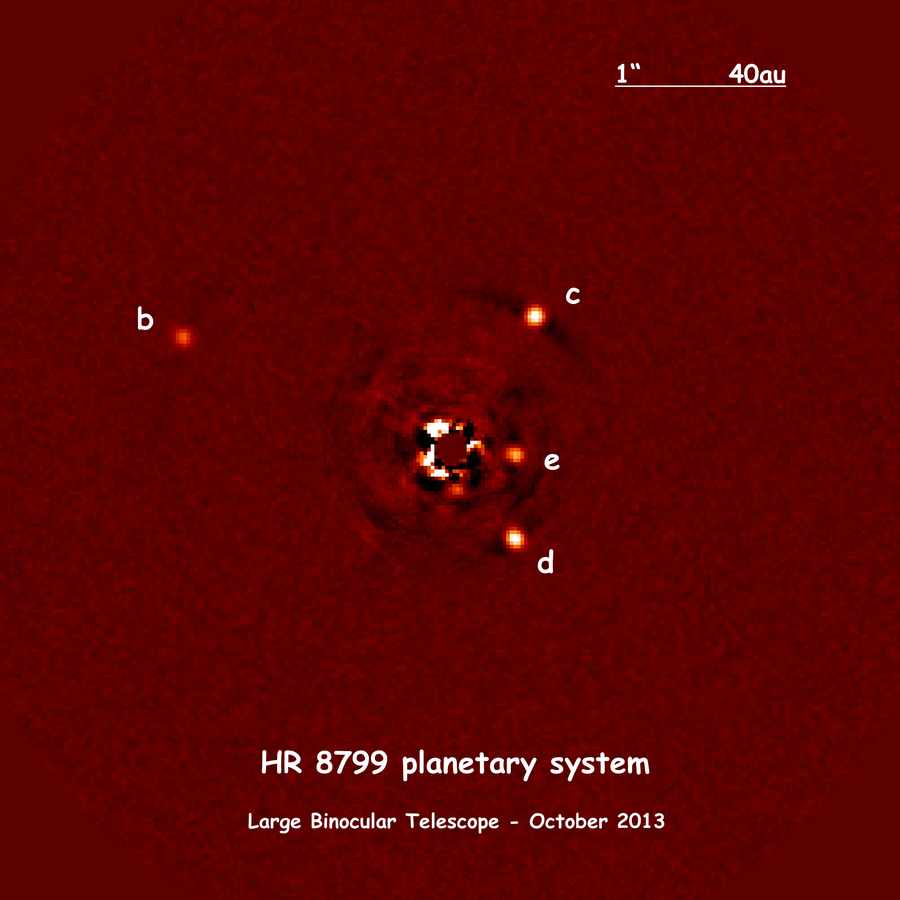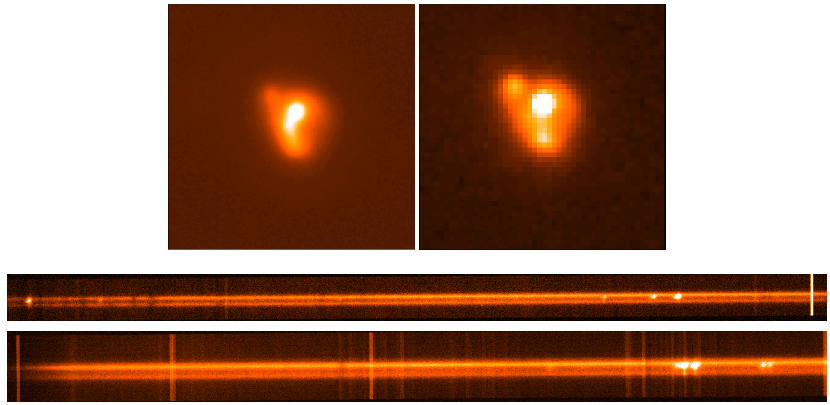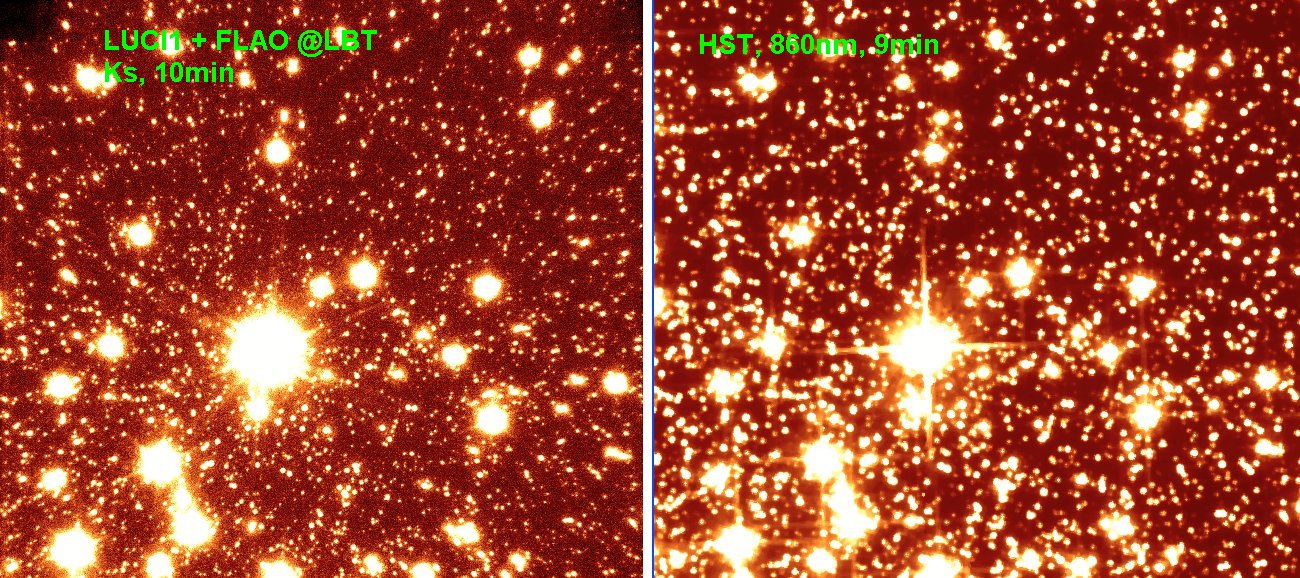The Large Binocular Telescope
Introduction
The Large Binocular Telescope is maintained by the
Large Binocular Telescope Observatory (LBTO)
which itself is funded and maintained by the LBT consortium (LBTC).
The LBTC has 5 partners, one of which is the German LBT
Beteiligungsgesellschaft (LBTB). The LBTB holds 25% of the observing
time at the LBT and is composed of the Max-Planck-Institute for
Astronomy in Heidelberg, the Max-Planck-Institute for extraterrestrial physics
in Garching, the Max-Planck-Institute for Radio Astronomy in Bonn,
the Leibniz-Institute for astrophysics in Postdam and the
Landessternwarte Heidelberg (LSW). At present, the LSW has a modest share
of the observing time of about 5 nights per year. This includes
guaranteed time as compensation for funding by the Federal Ministry of
Education and Research (BMBF) to built instruments for the LBT.

|
The LBT at dusk. Credit: LBTO
The LBT is located on Mt. Graham at the Mount Graham National
Observatory (MGIO, link) about 240km east of Tucson, Arizona at
an altitude of 3200m. It is in operation 10 months per year and
being closed most of July and August due to the monsoon season.
Instrumentation
The unique aspect of the LBT is twofold. First of all, it harbors
two 8.4m mirrors on a common mount, which allow interferometric
measurements with a spatial resolution of a 22m baseline.
Secondly, it has modern state-of-the-art instruments available.
Four pairs of basically identical wide-fields cameras, optical and near-infrared
imager and multi-object spectropgraphs, as well as very-high resolution
Echell spectrographs can be used. Complemented is the LBT by various
interferometers. The near-infrared instruments can be used in
combination with lasers for ground-layer adaptive optics correction over
a large field of view or natural guide-star adaptive optics correction
for highest spatial resolution.

|
The two LUCI instruments at the LBT. Each instrument
weighs about 3.3 metric tons and has a diametr of 1.5m. Credit: LBTO
Most of the instruments are delivered by the partners
as inkind contribution to the project. The LBTB inkind contribution
are the LUCI instruments, a pair of near-infrared images and multi-object
spectrographs. The LSW is the PI institute of these instruments. See also the
"press release by the University of Heidelberg"
Strategic importance of the LBT for the LSW
The LBT and its instrumentation is of strategic importance for the LSW.
It allows to conduct observations with an 8m class telescope on
the northern sky and is in support of the major scientific working areas
at the LSW - the characterization of extrasolar planets, active galactic nuclei
and galactic archeology. Some examples:

|

|
Left) Direct image of extrasolar planets orbiting HR 8799
Credit: A.-L. Maire, LBTO. Right) A very high resolution spectrum of Kepler 444.
This star hosts at least 5 extrasolar planets. Credit: K. Strassmeier, AIP.

|

|
Left) NIR/optical images and optical spectra of a candidate harboring
two active galactic nuclei. Apparently
this systems harbors only one AGN which is inbetween the prominent optical components and belongs
to the central feature in the left NIR-image. Credit: J. Heidt, LSW. Right)
Adaptive optics aided NIR-image of the high-redshift radio galaxy 3C 294. The source breaks
into three
components two of which may harbor an active galactic nucleus. Credit: J. Heidt, LSW.

|
Comparison of a LBT adaptice optics aided NIR-image
of the globular cluster Messier 5 to the same field observed by the Hubble Space Telescope.
The LBT-image is much sharper. Globular clusters are prime targets for Galactic Archeology
studies. Galactic Archeology is supported by the Collaborative Research Center SFB 881
"The Milky Way System". Credit: W. Seifert, LSW.


